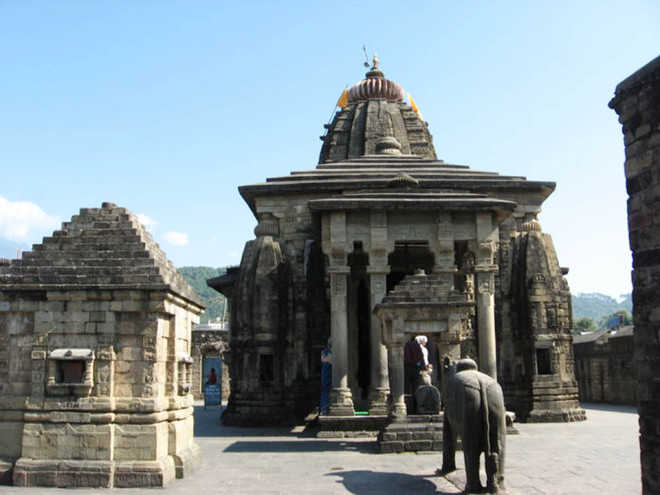Baijnath, where effigy of Ravana is not burnt
Lalit Mohan
Tribune News Service
Dharamsala, October 19
In most parts of the country burning effigy of Ravana, the symbol of evil, is celebrated at Dasehra. However, in Baijnath, a small town located about 60 km from Dharamsala, Ravana for the inhabitants is a disciple of Lord Shiva. Hence, burning of Ravana’s effigy is considered inauspicious in this town.
Though most of population in the town believes in Hindu religion, they do not celebrate Dasehra.
A strong belief that celebrating Dasehra festival would bring wrath of Lord Shiva on them keeps residents of the town away from burning the effigies of Ravana, his brother Kumbhkaran and son Meghnath as per the tradition.
The residents, when contacted by The Tribune, said that Ravana was a great devotee of Lord Shiva. Some people in the town tried to celebrate Dasehra about a decade ago. They burnt the effigies of Ravana. However, all of them died before the next Dasehra. The people took this as the wrath of Lord Shiva and nobody dared to celebrate the festival again, say locals.
The belief that keeps residents of Baijnath away from the festival is also associated with the famous Shiva temple located in the town that is about the 12 famous ‘Jotirlingas’ located across the country.
As per the legend, it is believed that during the Treta yug, Ravana in order to have invincible powers worshiped Lord Shiva in Kailash mountains. To please the almighty he offered his 10 heads in the havan kund. Influenced by this extraordinary deed of the Ravana, the Lord Shiva not only restored his heads but also bestowed him with powers of invincibility and immortality.
Ravana also requested the Lord Shiva to accompany him to Lanka. Shiva consented to the request of Ravana and converted himself into ling. The Lord Shiva asked him to carry the ling and told him that he should not place the ling down on the ground on his way. Ravana started moving in south direction and reached Baijnath where he felt the need to answer the nature’s call. On seeing a shepherd, Ravana handed over the ling to him and went away to relieve himself. On finding the ling very heavy, the shepherd kept the ling on the ground and the ling got established there.
Another interesting thing about the town of Baijnath is that there is no shop of goldsmiths. Though nobody knows the reason no goldsmith comes up with shop in Baijnath.
The Baijnath temple is believed to be constructed in the 1204 AD by two merchants Ahuka and Manyuka. Two inscriptions in the porch of temple indicate that it existed even before the present one was constructed. It is a beautiful example of early medieval north Indian temple architecture. The structure is now under the protection of the Archeological Survey of India.
Unlock Exclusive Insights with The Tribune Premium
Take your experience further with Premium access.
Thought-provoking Opinions, Expert Analysis, In-depth Insights and other Member Only Benefits
Already a Member? Sign In Now










